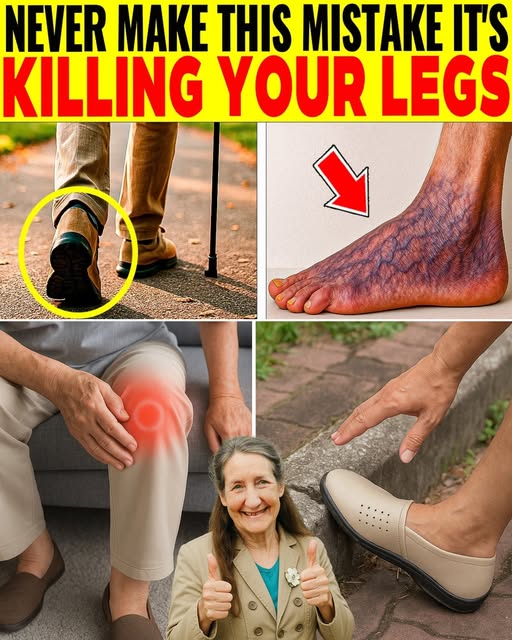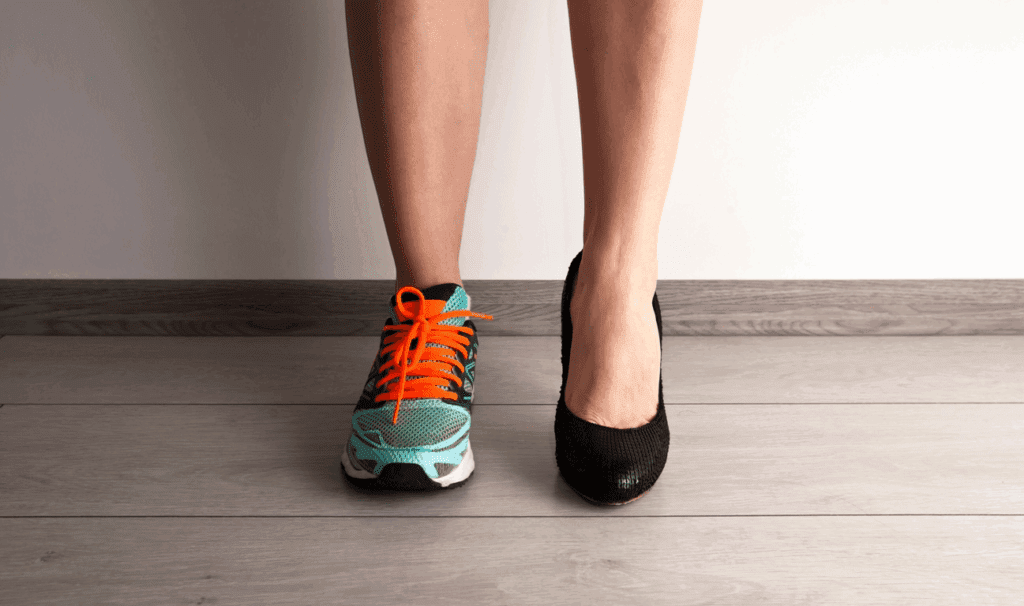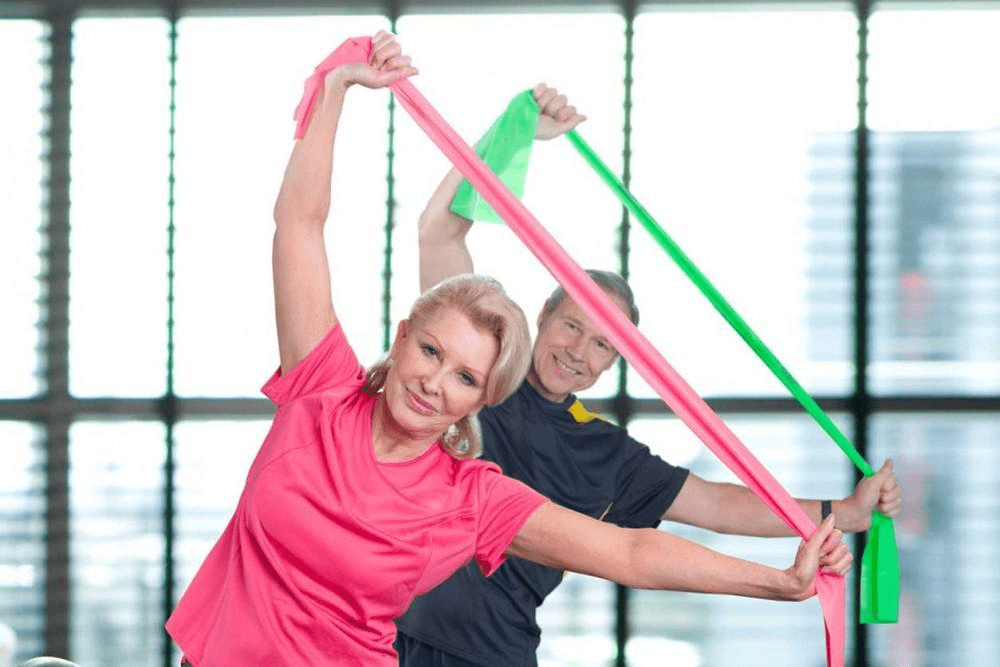As we age, keeping our legs strong and healthy becomes more important than ever. Strong legs help us stay active, maintain balance, and enjoy life to the fullest. However, many older adults unknowingly make mistakes that can weaken their legs or lead to discomfort. By understanding these common pitfalls, you can take steps to protect your leg health and stay mobile for years to come. Let’s explore 13 mistakes that can harm leg health in older adults and how to avoid them.

Skipping Regular Exercise
Exercise is key to keeping legs strong, but many older adults don’t get enough physical activity. According to the CDC, regular exercise can improve muscle strength and reduce the risk of falls. Without it, leg muscles can weaken, making daily tasks harder.
Tips to Stay Active:
- Aim for 150 minutes of moderate exercise per week, like brisk walking.
- Include strength exercises, such as leg lifts or chair squats, twice a week.
- Try low-impact activities like swimming or tai chi to protect joints.
Ignoring Pain or Discomfort
It’s easy to brush off leg pain as “just aging,” but ignoring it can lead to bigger problems. Conditions like arthritis or poor circulation may worsen without attention. Harvard Health notes that early intervention can prevent complications.
What to Do:
- Track when and where you feel pain and share it with your doctor.
- Avoid self-diagnosing or assuming pain is normal.
- Ask about physical therapy or other treatments to manage discomfort.
Wearing Improper Footwear
Shoes that don’t fit well or lack support can harm leg health. High heels, flip-flops, or worn-out sneakers can strain muscles and joints. The Mayo Clinic recommends supportive shoes to maintain proper alignment.

Choosing the Right Shoes:
- Look for shoes with good arch support and cushioning.
- Replace worn-out shoes every 6–12 months.
- Get your feet measured regularly, as foot size can change with age.
Sitting for Too Long
Prolonged sitting can weaken leg muscles and reduce circulation. Research from the American Heart Association suggests that sitting for long periods may increase the risk of blood clots or swelling in the legs.
Break the Sitting Habit:
- Stand or walk for 1–2 minutes every hour.
- Try seated leg exercises, like ankle circles, during TV time.
- Use a standing desk or take short walks to stay active.
Neglecting Hydration
Dehydration can cause muscle cramps and fatigue, which affect leg health. Older adults may not feel thirsty as often, but staying hydrated is critical. The National Institutes of Health recommends adequate fluid intake for muscle function.
Hydration Tips:
- Drink 6–8 cups of water daily, unless your doctor advises otherwise.
- Include hydrating foods like fruits and vegetables.
- Limit caffeine and alcohol, which can dehydrate you.
Poor Nutrition Choices
A diet lacking key nutrients can weaken leg muscles. Protein, calcium, and vitamin D are essential for muscle and bone health. WebMD highlights that deficiencies in these nutrients can increase the risk of fractures or muscle loss.

Build a Balanced Diet:
- Eat protein-rich foods like lean meats, beans, or yogurt.
- Include calcium sources such as dairy, kale, or fortified cereals.
- Ask your doctor about vitamin D supplements if you get limited sun exposure.
Overdoing High-Impact Activities
While exercise is important, high-impact activities like running on hard surfaces can stress aging joints. Overdoing it may lead to knee or hip pain, according to the Arthritis Foundation.
Exercise Safely:
- Choose low-impact options like cycling or water aerobics.
- Warm up before activity and stretch afterward.
- Listen to your body and avoid pushing through pain.
Not Using Assistive Devices When Needed
Some older adults avoid using canes or walkers due to stigma, but these tools can prevent falls and reduce leg strain. The CDC reports that assistive devices can improve mobility and safety.
Embrace Support:
- Talk to a physical therapist about the right device for you.
- Practice using assistive tools to build confidence.
- View them as tools for independence, not limitations.
Skipping Stretching
Tight muscles can limit mobility and increase injury risk. Regular stretching improves flexibility and blood flow to the legs. Harvard Health suggests daily stretching for older adults.

Simple Stretches to Try:
- Hamstring stretch: Sit and extend one leg, reaching toward your toes.
- Calf stretch: Lean against a wall with one leg bent and the other straight.
- Hold each stretch for 15–30 seconds and repeat 2–3 times.
Ignoring Weight Management
Carrying extra weight puts stress on leg joints, increasing the risk of osteoarthritis. The Mayo Clinic notes that even small weight losses can reduce knee pain and improve mobility.
Healthy Weight Tips:
- Focus on portion control and whole foods like vegetables and lean proteins.
- Work with a dietitian to create a sustainable plan.
- Combine diet changes with regular exercise for best results.
Poor Posture Habits
Slouching or improper posture can strain leg muscles and joints. Standing or sitting correctly helps distribute weight evenly, reducing stress on the legs, per the National Institute on Aging.
Improve Posture:
- Keep shoulders back and head aligned with your spine.
- Use ergonomic chairs or cushions for support.
- Practice balance exercises like standing on one leg to strengthen core muscles.
Not Getting Enough Sleep
Sleep is essential for muscle recovery and overall health. Poor sleep can lead to fatigue, increasing the risk of falls or weakness. The National Sleep Foundation recommends 7–9 hours of sleep for older adults.
Sleep Better:
- Stick to a regular sleep schedule.
- Create a relaxing bedroom environment, free of screens.
- Avoid heavy meals or caffeine close to bedtime.
Forgetting Regular Checkups
Regular doctor visits can catch leg health issues early, such as circulation problems or nerve damage. The CDC emphasizes preventive care to maintain mobility as we age.

Stay Proactive:
- Schedule annual checkups and discuss any leg concerns.
- Ask about screenings for conditions like peripheral artery disease.
- Follow your doctor’s advice for managing chronic conditions.
Why Leg Health Matters
Taking care of your legs is about more than just staying active—it’s about preserving your independence and quality of life. By avoiding these common mistakes, you can keep your legs strong and healthy for years to come. Share this article with a friend who wants to stay mobile and active! What’s your favorite tip for leg health? Comment below!
*Disclaimer: This article is for informational purposes only and does not substitute professional medical advice. Consult your doctor before making health changes.